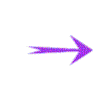| The key is for identification of common families of sedentary polychaetes in Hong Kong. Before using the key, please make sure that the polychaete to be identified is Sedentary Polychaete. For more information to define whether it is Errants or Sedentaries, please visit the pages of 'What are Sedentary Polychaetes?', 'The difference between Errants and Sedentaries' and 'Marine Errant Polychaetes in Hong Kong'. |
